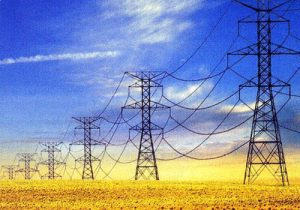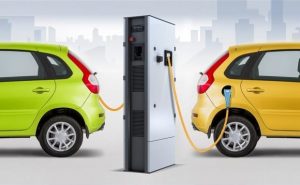
Ukraine in 2020 reduced the export of electricity by 26.5% (by 1.715 billion kWh) compared to 2019, to 4.754 billion kWh, according to the data of NPC Ukrenergo.
According to the calculations of Interfax-Ukraine, the supply of electricity from the Burshtyn TPP energy island to Hungary, Slovakia and Romania decreased 32.1% (by 1.428 billion kWh), to 3.02 billion kWh.
Electricity supplies to Poland grew by 7.8% (by 107.3 million kWh), to 1.484 billion kWh. Electricity supplies to Moldova decreased 74.1% (by 476.9 million kWh), to 167.1 million kWh. Export to Belarus amounted to 82.8 million kWh.
Ukrainian electricity was not exported to Russia.
At the same time, Ukraine in 2020 also cut electricity imports by 15.3% (by 413.7 million kWh) compared to 2019, to 2.285 billion kWh, including 1.474 billion kWh supplied from Slovakia, 516 million kWh from Hungary, 152.3 million kWh from Belarus, 89.4 million kWh from Romania, and 53.4 million kWh from the Russian Federation.
In addition, within technological flows associated with the parallel operation of the IPS of Ukraine with the power systems of neighboring countries and power supply of dead-end areas, 58.9 million kWh of electricity was imported from the Russian Federation last year, and 0.9 million kWh from Belarus. Emergency supplies from Hungary amounted to 1.1 million kWh.

Electricity production in the Integrated Power System of Ukraine in 2020 decreased 3.3% compared to the same period in 2019, to 148.81 billion kWh, the Ministry of Energy has told Interfax-Ukraine.
Nuclear power plants (NPP) last year reduced electricity generation by 8.2% compared to the same period last year, to 76.202 billion kWh. In particular, production of electricity at Zaporizhia NPP amounted to 28.162 billion kWh (26.7% less compared to 2019), Yuzhnoukrainsk some 19.441 billion kWh (8.7% more), Rivne NPP some 17.559 billion kWh (8.2% more), and Khmelnytsky NPP some 11.041 billion kWh (45.9% more).
Thermal power plants (TPP), as well as combined heat and power plants and cogeneration plants reduced their output by 6.2%, to 52.34 billion kWh. In particular, TPPs reduced production by 11.9%, to 39.553 billion kWh, while combined heat and power plants and cogeneration plants increased by 17.6%, to 12.787 billion kWh.
Hydro power plants and pumped storage power plants reduced production by 3.7%, to 7.581 billion kWh, and block stations increased by 4.3%, to 1.845 billion kWh.
Electricity production by non-traditional sources (wind farms, solar power plants, biomass) grew almost twice, to 10.841 billion kWh.
The share of nuclear power plants in the structure of electricity production accounted for 51.2%, thermal power plants, combined heat and power plants and cogeneration plants 35.2%, hydro power plants and pumped storage power plants 5.1%, block stations 1.2%, alternative sources 7.3%.
In December 2020, electricity production in the Integrated Power System of Ukraine grew by 7.2% compared to the same month in 2019, to 15.241 billion kWh.

Ukroboronprom State Concern is studying the possibility of resuming the production of An-74 aircraft at the state enterprise Kharkiv State Aircraft Manufacturing Company (KSAMC) and including them in the state defense order, Deputy Prime Minister – Minister for Strategic Industries of Ukraine Oleh Urusky said on Facebook on Friday night.
According to him, at a recent meeting on the settlement of problematic issues of enterprises that are members of Ukroboronprom, the possibility of resuming the production of An-74 aircraft at the KSAMC, as well as amendments to regulatory legal acts to improve the conditions for defense production was discussed.
“As a result of the meeting, a number of decisions were made regarding the importance of including the supply of An-74 aircraft in the interests of the Armed Forces of Ukraine in the state defense order, carrying out legislative initiatives to improve the financial situation at the KSAMC, amending the legislation of Ukraine on pricing of military products and advance payments on state contracts for state defense orders,” Urusky said.
According to him, the meeting was attended by representatives of the central executive authorities, the management of Ukroboronprom and its enterprises.
The An-74 aircraft is a modification of the An-72 aircraft. It is designed to carry out ice reconnaissance and transportation while providing research work in the Central Arctic Basin and Antarctica. The aircraft can be converted under operating conditions into cargo and ambulance versions.

Initial registrations of electric vehicles (new and used) in Ukraine in 2020 decreased by 1% (or 87 units) compared to 2019, to 7,455 units, including 91.3% used cars (6,803), according to the Ukrautoprom association.
According to the data on its website, 7,095 passenger cars (of which only 9% are new), 359 commercial vehicles (3% new) and one electric bus (manufactured in 2019) were registered over the year.
At the same time, the average age of the used electric registered passenger cars was five years last year, of commercial vehicles seven years.
Thus, compared to 2019, the registration of used cars in 2020 decreased by 2% (by 135 cars), and new ones increased by 8% (or by 48 cars).
The most popular electric vehicle in Ukraine remains Nissan Leaf with 2,180 registrations, the second place is taken by Tesla Model 3 (some 865 cars), and the third by Tesla Model S (753 cars). The fourth position is taken by Chevrolet Bolt with 474 registrations, and the Tesla Model X closes the top five most popular zero-emission vehicles with 366 registrations per year.
The best result for new electric vehicle sales was shown by Audi E-Tron, which was chosen by 122 buyers.
The commercial electric vehicle market was dominated by Renault Kangoo Z.E. with 304 registrations, including only seven new ones.
The association also said that in December 2020, the Ukrainian vehicle fleet was replenished with 632 electric vehicles, which is 8% more than a year earlier, including 598 cars (more by 7% compared to December 2019) and 34 commercial (more by 36%).
The share of used cars in December last year in the passenger segment was 86%, in the commercial segment 97%.

The Cabinet of Ministers of Ukraine has approved the Concept of the national target scientific and technical space program of Ukraine for 2021-2025. The relevant decision was made at the Wednesday government meeting.
“Finally, the situation in the industry will get off the ground, because the last few years it has actually been in a frozen state, not understanding either its priorities or the conditions for development. The next important and urgent step is the adoption of the National target scientific and technical space programs of Ukraine for 2021-2025,” Deputy Prime Minister, Minister for Strategic Industries of Ukraine Oleh Urusky said.
He said this concept was developed by the Ministry of Strategic Industry along with the State Space Agency. Its purpose is to expand the use of space potential, increase influence on the development of society, ensure the implementation of the interests of the government in the defense and national security sectors. The concept also defines the key problems of scientific and technological development of space activities, ways of solving them and expected results.
According to the explanatory note to the draft concept, the estimated amount of funding for the implementation of the program is approximately UAH 30 billion, including about UAH 15 billion from the national budget.
Minister of Finance Serhiy Marchenko, during the adoption of this document, made a remark that the implementation of this program should be carried out within the budget assignments.
It is expected that the implementation of the program will lead to the following results: access to the most modern information technologies (Earth remote sensing systems, coordinate-time and navigation systems) will be extended for the citizens of Ukraine; increased security will be ensured (through the use of space information to ensure national security in the military, political, economic, social, environmental, scientific and technical, information spheres); workers in the space industry will be provided with stable orders, prestigious and highly paid jobs; workers in agriculture, forestry in other sectors of the economy will have the opportunity to rational land use using space images; young people will have the opportunity to take the first steps in science and technology, to establish creative ties with peers from abroad in the process of implementing scientific and educational space projects.